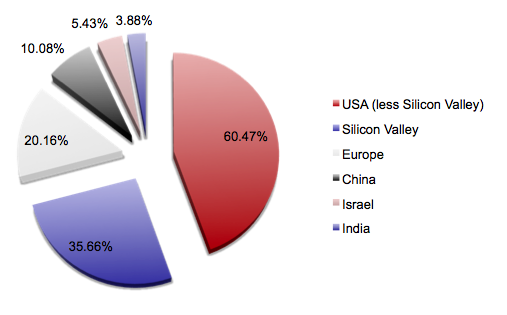Guest post: Manuel López-Ibáñez on (open?) document formats
I am always interested in those working on or about the tools we use everyday. As translators, we do not get to pick our document format of choice. Wouldn’t life be easier if people used compatible formats? Ah, Utopia, we are walking towards you…
Let me introduce this (very witty) short article my friend Manuel López-Ibáñez has written on the subject. He is currently pursuing a PhD thesis at the School of the Built Environment of Napier University in Edinburgh (UK).
Feel free to agree, comment (or even disagree!) in the comments section. It is moderated exclusively to get rid of spam.
Microsoft’s new trap: don’t get caught!
Perhaps you have heard of a free (both free as beer and free as
speech) office suite called OpenOffice [1]. For those who haven’t, in
short, OpenOffice is like Word, Excel and Powerpoint but different.
Apart from being software libre [2] and gratis, another interesting
feature of OpenOffice is that its document formats are standardized. A
document format describes how a document (like a presentation) is
saved in your hard drive. For a program to read your presentation and
show it in your screen, it must perfectly understand the
presentation’s format. OpenOffice uses a format that its based on a
cool and modern technology called XML.
The very best bit is that the OpenOffice XML format is an
international standard called the *OpenDocument* format. Being an
international standard means that the complete description of the
format is publicly available and everybody is welcome to use this
description in its own software. Actually, it is encouraged that you
follow exactly the description, otherwise you should not say that your
program handles OpenDocument formats.
On the other hand, Word, Excel and Powerpoint are closed, proprietary,
non-standard formats. Only Microsoft knows how they work. If you want
your program to use those formats, you have to pay Microsoft to see
the description and sign a document stating that you are not going to
make public that information before the hell freezes, and perhaps not
even after that. Microsoft may decide that they don’t like your
program (or you, or your country), and refuse to give you the
description of Word documents. Your only chance is to «guess» how Word
documents work. And it is amazingly difficult to guess such things.
And yet, OpenOffice is able to handle Word documents almost perfectly.
Moreover, nobody knows what is going on in a Word document: you may
think that you have deleted something but it might be just hidden
there. This last part may sound conspiracy mumbo-jumbo. Or theoretical
things that never happen in practice [3]. Go tell Alastair Campbell
[4]. All these cases have been discovered by people while trying to
guess how Microsoft formats work. Microsoft knows exactly what is
going on and which information is hidden and how to recover it. That
any government is using such documents to transfer sensitive
information is just creepy.
For the reasons above, OpenDocument, the format used by OpenOffice and
many other programs, is very interesting. It is so interesting that
Microsoft didn’t want the name of the format to include the words
OpenOffice. So Microsoft lobbied the standards committee to change the
original name of «OpenOffice Document Format» into OpenDocument.
Well, this doesn’t actually seem such an evil thing to do, does it? It
is a standard format. It would be nice to honor their inventors, that
is, OpenOffice but it is also fine if the name is not associated to
any particular program, since anybody is welcome to use it.
Interestingly, Microsoft is going to change its document formats for
Microsoft Office 2007 and they have decided to also use XML
technology. But instead of using the standard OpenDocument format,
Microsoft is going to use their own closed, non-standard format:
Office Open XML I actually needed to read this again to fully grasp
it:
1) Microsoft lobbied to change the name of the public standard format
from Open Office format to OpenDocument. This is the format used by
Open Office suite of programs.
2) Microsoft’s new closed, non-standard format will be called Office Open.
If you still don’t get it, don’t worry, That is precisely the point
[5]. To confuse people so they are tricked to say things like «Word
uses an open format» (no, it uses a format called Office Open that is
actually closed) or «Open Office is a format supported by Word» (no,
Office Open is the non-standard format supported by Microsoft. Open
Office uses the standard format OpenDocument).
Don’t let Microsoft mock you or your friends. Don’t get caught in
Microsoft’s trap [6].
[1] http://www.openoffice.org/
[2] http://www.gnu.org/philosophy/free-sw.html#translations
[3] http://doi.ieeecomputersociety.org/10.1109/MSECP.2004.1281241
[5] http://www.onlamp.com/pub/a/onlamp/2006/07/27/what-is-opendocument.html?page=3
[6] http://www.gnu.org/philosophy/sylvester-response.html
Related Posts
¿Todos los idiomas?
A menudo me preguntan ¿en Matiz traducís a todos los idiomas? Las primeras quince, veinte o quizá cincuenta veces todavía me preguntaba, muy en serio, cuántos idiomas pensaría esa persona que realmente hay en el mundo. Según esta página de la Unesco, Más de la mitad de los 7.000 idiomas que se hablan en
 12
Mar
12
Mar
Silicon Valley ¿glamour o realidad? #emprendefie
Mañana a las 18:45 en el Hotel Nelva de Murcia estaré en el Foro de Internacionalización de la Empresa, impartiendo una conferencia práctica, informal y realista con Rober Sáez, de Speen2. Hablaremos de nuestra experiencia en Silicon Valley con los Yuzz y lo que hemos aprendido desde entonces, que no es poco.
Los miembros y las miembras
Sé que este artículo es antiguo: llevaba ya un tiempo queriendo publicar la entrada (más o menos un año, tengo calculado), pero lo bueno es enemigo de lo mejor. Aquí va: un artículo buenísimo de Pérez Reverte. Suelo estar de acuerdo con él (excepto en algunos temas muy concretos), pero este artículo lo quise enmarcar








 0
0
Comentarios